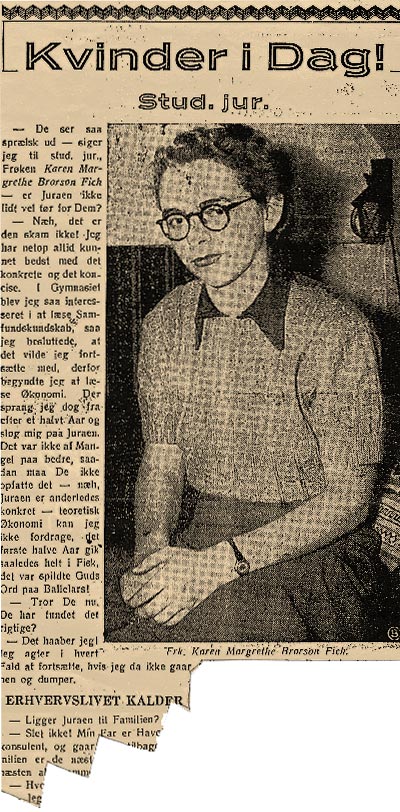A very important priority for the university's founders was that Aarhus should seek to establish a "residential institution", which was interpreted as students from outside of Aarhus being guaranteed a room in a hall of residence at the university and thereby enjoying both the security of the supervision of a resident warden, together with the stimulation of living with students from other subject areas. For this reason, the University Association had, in September 1928, already ensured that a new hall of residence would be ready to welcome 27 male students from outside of the city. The hall was called "Marselisborg Studentergaard" and was situated in what had formerly been the premises of an eye specialist on Marselis Tværvej, near Marselisborg Forest. From 1941 until the sale of the building in 1946, it functioned as a women's hall - apart from the period between November 1944 and May 1945 when it was commandeered by the German forces of occupation.
From 1935 and for the next quarter of a century, the University Association was able to use the funds that they had raised to build a total of nine halls of residence in the University Park, but even by the beginning of the 1950's it had to be acknowledged that only a quarter of the students moving into the city could be offered a room in one of the university's halls. Here it is worth mentioning that one of the key figures amongst the university's founders, the medical director Victor Albeck, dr.med., had speculated that at some point in the distant future the university might have a student population of 1,000 (there were fewer than 200 students on the university's books when Albeck died in 1933). The halls of residence in University Park are located on three sites, with three halls in each group. A warden's lodge stands alongside each of the three locations. The warden would have been a lecturer of the university, who, assisted by the porter, had the task of supervising the residents in the halls. The warden system was abolished in the 1970's. (Shortly before this, segregation of the sexes within the halls had also been abolished). The wardens' lodges still exist, but are now used for other purposes.
Conversely, five other houses for professors were pulled down at the beginning of the 1970's to make room for the building that runs around the north-eastern corner of the University Park. These professors' houses had been built by the University Association between 1933 and 1946 to provide living quarters for five professors and their households, including maids. The background for the building of these houses was primarily the idea (as expressed in the university report of 1925) that the university should "also be a close-knit world of its own, where the professors and the students both live alongside each other and carry on their daily activities together", but other factors would later come into consideration when a house became available for a new tenant, such as the particular professor's need to be constantly on hand to supervise experiments in the laboratories of departments within the University Park.
All five of the student halls of residence that existed at that time were commandeered by the Germans in the autumn of 1943 and established as the Gestapo Headquarters for Jutland. Around 250 students who had been living there went into private lodgings around the city. On the 31st October 1944, acting at the request of the Danish Resistance Movement in Jutland, the Royal Air Force carried out precision bombing of the headquartes, during which two of the halls of residence were reduced to rubble. These halls were rebuilt after the war.
 In the summer of 1943, the newspaper Demokraten published a series of profile interviews with female students at Marselisborg Studentergaard. On the 10th June it was the turn of law student, Karen Margrethe Brorson Fich. (University History Committee). |
 On the balcony of Hall of Residence 5, ca. 1948, are medical student Knud-Aage Bennike (left) and theology student Jens V. Gottlieb. (University History Committee). |
 The halls of residence after the RAF's bombing of Gestapo Headquarters on the 31st October 1944. (University History Committee). |